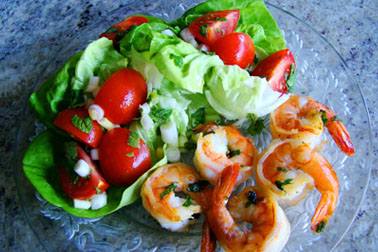
Most of your favorite recipes can be changed for the better without affecting the taste or fond memories; with slight modifications you can decrease the fat, saturated fat, calories, or sodium in any of your recipes.
The process of transforming a recipe into a healthier one takes two steps. First, identify the “ingredient of concern;&rdqu o; that could be an ingredient that''s high in total fat, saturated fat, cholesterol or sodium. Step two: Find a healthy substitution.
Here are a couple tricks of the trade for modifying recipes that you can try this year.
• Think of Greek yogurt as a fat-substitute, not just a snack. For example, ¾ cup plain Greek yogurt can replace 1 cup oil; 1 cup Greek yogurt can replace 1 cup sour cream, mayonnaise or cream cheese. For a lower-fat replacement for 1 cup heavy cream in a recipe, mix equal amounts plain Greek yogurt and heavy cream.
• Use rice to thicken soup. Typically creamed soups will be higher in fat, saturated fat and calories because they incorporate butter and cream. An easy, and cheap, substitution for dairy products in cream soup is rice. Stir ¼ cup uncooked rice into your favorite soup recipe as you bring the soup to a boil. Reduce heat and simmer, covered for 15 minutes until the rice is tender. Place the soup in a food processor or blender and blend until completely smooth. Place creamed soup back into pan, reheat and serve.
• Double up the fruit in baked goods. Since just 1 in 5 Americans eats the recommended 1 to 2 cups fruit each day, pumping up the fruit in baked goods is a tasty way to boost your intake.
Applesauce, ripe bananas and pureed peaches or prunes can stand in for oil or butter and sugar in muffins, quick bread, cake and even brownies. Prune purée, for example, can stand in for half the amount of butter, margarine or oil and will reduce the calories by 20-30 percent and the fat by 75-90 percent. To make prune purée, combine 8 ounces pitted prunes and 6 tablespoons water in food processor and whirl until smooth. Alternately, finely chop prunes and add to recipe.
• Ease up on table salt and turn to herbs and spices for flavor. The 2010 Dietary Guidelines suggest the average American ingest 2300 milligrams (about 1 teaspoon) of sodium a day. People 51 and older, African Americans (ages 2 and older), and those with diabetes, high blood pressure, or chronic kidney disease should consume 1500 mg per day since they''re at higher risk of cardiovascular disease. If you still think a recipe needs to be perked up with salt, use just half the amount listed in the recipe. Take note, however, not to mess with the salt in baked goods made with yeast. In those recipes, salt helps control the yeast.
• Select a salt with a lower sodium content. Different varieties of salt contain different amounts of sodium. Table salt, for example, contains 590 mg per ¼ teaspoon, while equal amounts of sea salt and kosher salt contain 400 mg and 480 mg, respectively. Sea salt is an unrefined salt obtained by evaporating seawater.
While it contains minerals and trace elements that are refined out of table salt, it does not naturally contain iodine that is added to table salt.
• Toby Smithson, a registered dietitian, works for the Lake County Health Department/Community Health Center and is a national spokeswoman for the Academy of Nutrition and Dietetics.

